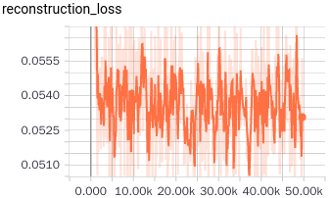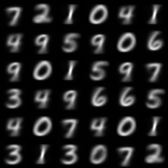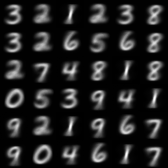This is the code for this video on Youtube by Siraj Raval on Capsule Networks.
A Tensorflow implementation of CapsNet in Hinton's paper Dynamic Routing Between Capsules
- Note:
- The routing algorithm has been found not implemented as the same as the one in the paper!(#8, thanks very much, it's my carelessness) Although the current version works, but not effective as the results in the paper, I've paste out some results of the 'wrong' version(It's really interesting). I'll analyze the reasons of this interesting thing
- I've been working continuously for the last few days, coding, talking, writing docs, so I would like to give myself half a day. I will be back tomorrow, and keep updating this repo
- Here(知乎) is my understanding of the section 4 of the paper (the core part of CapsNet), it might be helpful for understanding the code. Thanks for your focus
- If you find out any problems, please let me know. I will try my best to 'kill' it as quickly as possible.
In the day of waiting, be patient: Merry days will come, believe. ---- Alexander PuskinIf 😊
-
We have a lot of interesting discussion in the WeChat group, welcome to join us. We will release the discussion results in the name of this group, pointing out the contribution of any contributors
-
If you find out that the Wechat group QR is invalid, add my personal account.
- Python
- NumPy
- Tensorflow (I'm using 1.3.0, others should work, too)
- tqdm (for showing training progress info)
Step 1.
Clone this repository with git.
$ git clone https://github.com/naturomics/CapsNet-Tensorflow.git
$ cd CapsNet-Tensorflow
Step 2.
Download MNIST dataset, mv and extract them into data/mnist directory.(Be careful the backslash appeared around the curly braces when you copy the wget command to your terminal, remove it)
$ mkdir -p data/mnist
$ wget -c -P data/mnist http://yann.lecun.com/exdb/mnist/{train-images-idx3-ubyte.gz,train-labels-idx1-ubyte.gz,t10k-images-idx3-ubyte.gz,t10k-labels-idx1-ubyte.gz}
$ gunzip data/mnist/*.gz
Step 3. Start training with command line:
$ pip install tqdm # install it if you haven't installed yes
$ python train.py
the tqdm package is not necessary, just a tool for showing the training progress. If you don't want it, change the loop for in step ... to for step in range(num_batch) in train.py
$ python eval.py --is_training False
Results for the 'wrong' version(Issues #8):
- test acc
| Epoch | 49 | 51 |
|---|---|---|
| test acc | 94.69 | 94.71 |
Results after fix Issues #8:
-
Finish the MNIST version of capsNet (progress:90%)
-
Do some different experiments for capsNet:
- Using other datasets such as CIFAR
- Adjusting model structure
- Using other datasets such as CIFAR
-
There is another new paper about capsules(submitted to ICLR 2018), follow-up.
Credits for this code go to naturomics. I've merely created a wrapper to get people started.













